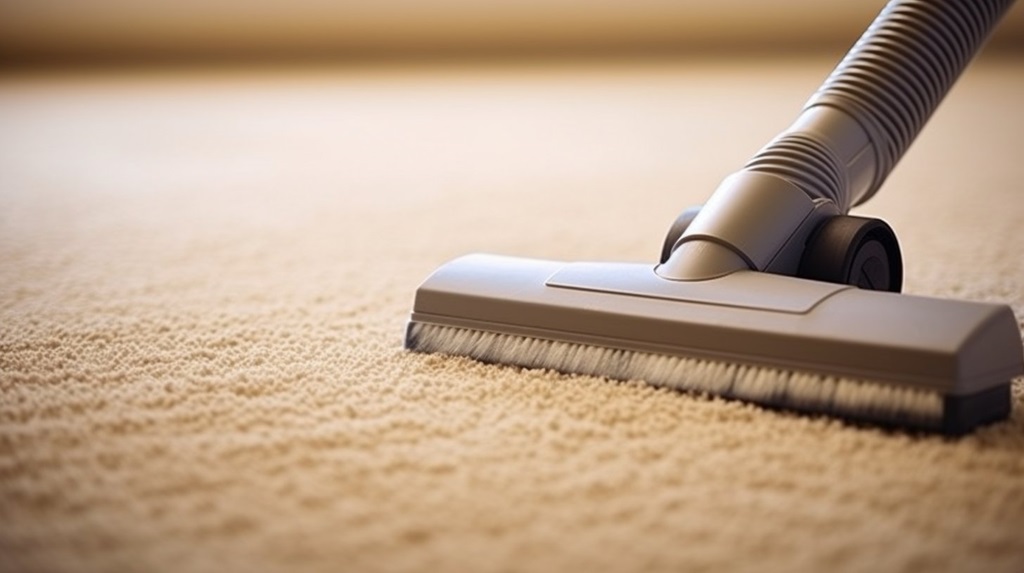
Reasons to Replace your Old Boiler
January 16, 2024
Signs that you need a new kitchen
January 23, 2024Carpets can add a warm and cozy touch to any room, but they can also accumulate a lot of dirt and grime over time. Foot traffic, spills, and stains can all contribute to making your carpets look dull and uninviting. However, with the right techniques and products, you can easily restore your carpets to their former glory. Knowing how to clean heavily soiled carpet can help remove ground-in dirt and stains, making your carpets look fresh and new again. Whether you opt for a professional cleaning or choose to do it yourself, there are many effective methods and products available to help you get your carpets looking their best. Don’t let a dirty carpet ruin the look and feel of your home – take action and restore your carpets to their original beauty.
Table of Contents
ToggleAssessing the Damage: Types of Carpet Soiling
Before diving into cleaning, it’s important to assess what types of soiling your carpet has accumulated. This will help determine the best method and products to use. Here are some common types of heavy carpet soiling:
Embedded dirt and grime – This is dirt, dust, and grime that has become ground into the carpet fibers over time. Vacuuming helps with surface-level dirt, but embedded dirt requires deeper cleaning.
Spills and stains – Liquids like wine, coffee, juice, oil, etc. can leave behind stubborn stains. Dried spills create crusty residues. Organic stains need special stain-fighting solutions.
Pet accidents – Urine, feces, and vomit from pets can lead to unpleasant odors and set deep into carpet fibers. Enzyme cleaners help eliminate pet stains and smells.
Mud and clay – Outdoor messes like mud and clay get tracked inside and ground into carpets. They require pretreatment and extraction for total removal.
Oil-based grime – Grease, tar, soot, and oil create sticky, oily residues. Degreasing solutions help cut through and dissolve oily grime.
Wax and chewing gum – These cling to carpet fibers until removed. Specialty gum removers and ice can eliminate wax and gum.
Mold and mildew – Moisture issues can create mold/mildew growth on carpets. After treating growth, drying and deodorizing is key.
So before cleaning, inspect all carpets and identify existing stains and soiling issues. This will direct your cleaning approach.
The Importance of Deep Cleaning for Soiled Carpets
It’s tempting to spot-treat heavy stains and call it a day. But for carpets covered in embedded dirt, that is rarely enough. All that built-up grime will continue damaging carpet fibers if allowed to remain. The longer the dirt stays trapped, the more the carpet suffers.
Deep cleaning is critical for heavily soiled carpets for a few key reasons:
Prevent permanent damage – Gritty dirt is abrasive. When ground in repeatedly, carpeting can become permanently dulled. Deep cleaning removes abrasive particles before they can cause lasting wear or discoloration.
Extend the carpet’s lifespan – Built-up dirt leads to crushed, matted fibers over time. Deep cleansing revives carpet piles, preventing premature aging and deterioration. Keeping carpets free of debris enhances longevity.
Improve air quality – Dirty carpets harbor dust mites, mold spores, pet dander, and other allergens. Extraction cleaning removes these pollutants from the home.
Freshen up appearance – Old, neglected carpets look dingy and dull. A thorough deep cleaning restores vibrancy and makes the whole room look cleaner.
Eliminate odors- Stale, musty scents often accompany heavy soiling. Deep cleaning deodorizes by removing dirt and bacteria that cause bad smells.
A surface-level vacuum will never provide these deep-down benefits. When carpets are extremely dirty, a deeper cleanse is required to revitalize them and your home’s environment.
Deep Cleaning Equipment and Tools
Effectively deep cleaning filthy carpets requires using the right equipment and tools. Here is an overview of some essential items for tackling heavy carpet soiling:
- Powerful vacuum – A strong motor and suction capabilities are needed to vacuum thoroughly before and after liquid cleaning. Canister vacuums are ideal for carpets.
- Carpet cleaner machine – Also called an extractor, this uses cleaning agents and hot water to deep clean carpets via spray and suction. Rent or buy a high-performing model.
- Pretreatment sprays – Specialty sprays applied before the cleaner machine that helps break down stains and grime. Look for ones that match your needs.
- Cleansing solutions – The cleaning liquids and detergents used in carpet cleaner machines. Pick ones made for machine use.
- Scrub brushes – For manual spots, a bristle scrub brush helps work cleaner deep into fibers.
- Clean cloths – Absorbent white cloths help with blotting up liquids and debris during cleaning.
- Gum remover – Solvent-based formulas that dissolve gum residues. Useful for gum stuck to carpet fibers.
- Odor neutralizers – Liquids that eliminate odors and leave carpets smelling fresh. Great for pet accidents.
Investing in the proper equipment is the first step toward effectively deep cleaning your carpets.
Carpet Cleaning Process Step-By-Step
Once equipped, follow this step-by-step process for deep cleaning extremely dirty carpets:
1. Vacuum Thoroughly
Use your vacuum’s highest suction setting to clean all debris and surface dirt. Vacuum in both directions to cover the whole area. This prevents pushing dirt deeper when wet cleaning.
2. Pretreat Stains
Apply a pretreatment spray designed for your specific stains. Let it soak in for 5-10 minutes. For dried stains, gently loosen debris with a scrub brush. Avoid over-wetting the carpet.
3. Fill Carpet Cleaner Reservoir
Fill the cleaner machine tank with very hot water and the appropriate amount of carpet cleaning solution. Check that the hoses are securely attached.
4. Deep Clean Entire Area
Run the machine slowly overall carpet areas, dispensing the cleaning liquid. Avoid over-wetting. Make overlapping passes to cover evenly.
5. Rinse with Clean Water
Swap out soiled water for clean hot water. Make passes only with water to rinse away cleaning solution residue.
6. Extract Remaining Liquids
Make final dry passes with no cleaning liquid, simply running the suction to extract as much moisture as possible.
7. Ventilate and Allow to Dry
Open windows and use fans to circulate air. Allow carpets to fully dry before walking on them to prevent mold growth.
8. Vacuum Again Once Dry
A final vacuum removes any remaining dirt loosened by the deep clean. Your carpets should now look refreshed!
Performing these steps carefully gives your carpeting the deep cleansing needed. Note that specialist tools like gum removers may be needed for certain types of soiling.
Helpful Tips for Maximizing Effectiveness
To get carpets as clean as possible, keep these tips in mind:
- Always do a patch test on a small hidden area first to check for colorfastness or damage.
- Make sure the cleaner machine’s hoses reach all areas so you can access the whole carpet.
- Work in manageable sections so the carpets don’t get too saturated in a single pass.
- For really dirty high-traffic areas, repeat the spray-and-suction cycle for added cleaning power.
- Change the water in your extractor machine frequently to prevent re-depositing dirt.
- Use carpet cleaner solutions made specifically for machine cleaning. Avoid regular detergents.
- After drying, sprinkle baking soda on carpets for added deodorizing and to neutralize any remaining residues.
- Consider having carpets professionally cleaned every 12-18 months for maintenance.
With some elbow grease and the proper equipment, your carpets can go from frightfully filthy to fresh and flawless!
Deep Cleaning Solutions for Common Carpet Stains
Along with embedded dirt, carpets often accumulate challenging stains that require specialty treatment. Here are the best cleaning solutions for 5 common carpet stains:
Red Wine – Dish soap, hydrogen peroxide, and baking soda make an effective stain remover. Gently dab the area and rinse thoroughly.
Coffee – Mix equal parts white vinegar and water and spray liberally on the stain. Blot continuously with a cloth until the stain lifts.
Grease and Oil – Coat the stain in talcum powder or cornstarch to absorb the grease, then vacuum. Repeat cleaner applications as needed.
Mold and Mildew – Create a baking soda paste with water and apply to the affected area. Scrub gently and allow to dry fully before vacuuming.
Candle Wax – Place a paper towel over the wax and apply a hot iron to melt it. The wax will transfer to the paper. Repeat as needed.
Always spot-test cleaners in an inconspicuous area first. You can conquer even the toughest carpet stains with the right products and techniques.
Hiring a Professional Carpet Cleaner
For extremely soiled carpets or difficult stains that resist DIY efforts, calling in a professional carpet cleaning service may be your best option. Here are some key benefits to professional carpet cleaning:
Powerful equipment – Professional cleaners use industrial-strength hot water extraction machines far more powerful than rental models. This allows them to lift more embedded dirt from carpet fibers.
Specialized tools – They have access to specialized tools like motorized brush scrubbers to deep-clean high-traffic areas. This allows more thorough dirt removal.
Professional techniques – Experienced carpet cleaners are trained in techniques optimized to get carpets truly clean while protecting fibers. They know how to avoid overwetting and damage.
Stain removal expertise – Cleaning pros have specialized stain removal solutions, including powerful oxidizers and enzymes, to eliminate difficult stains like wine, oil, and pet accidents.
Faster drying times – Their powerful extractor machines remove more liquid, speeding up dry time so carpets are usable sooner.
Deodorizing services – Many companies offer deodorizing and odor-elimination treatments for freshening carpets after intensive cleaning.
Convenience factor – You avoid the hassle of renting equipment, buying cleaners, and tackling the labor yourself. Professionals handle the elbow grease.
While costs are higher for pros, their level of cleaning is hard to replicate at home. For cleaning satisfaction guaranteed, call in the experts.
Conclusion
Renewing extremely dirty carpets back to their former glory takes work, but is achievable with some elbow grease and the right cleaning approach. Focus on thoroughly vacuuming, pretreatment of stains, hot water extraction cleaning, and ample drying time. Whenever possible, clean spills and stains immediately to prevent the buildup of grime. Follow up deep cleaning with regular maintenance to keep your carpets fresh and clean. With some time and attention, your carpets can be restored to freshly cleaned condition.
FAQs
How often should you deep clean carpets?
Once a year is recommended for light traffic areas. Heavy traffic areas may need cleaning every 6 months. Spot clean stains ASAP when they occur.
Is it better to shampoo or steam clean carpets?
Hot water extraction (steam) is more effective at lifting deep dirt from carpeting fibers. Shampooing alone leaves more residue.
What temperature water should be used?
Heated water improves cleaning power. Fill carpet cleaner tanks with the hottest water possible based on machine recommendations.
Can you put vinegar in a carpet cleaner?
Small amounts of white vinegar can be combined with water in cleaners, but too much can damage carpet backing and hoses.
How long should carpets dry after cleaning?
Carpets typically dry in 4-8 hours but allow 24-48 hours before walking on them or moving furniture back. This prevents mold growth.




